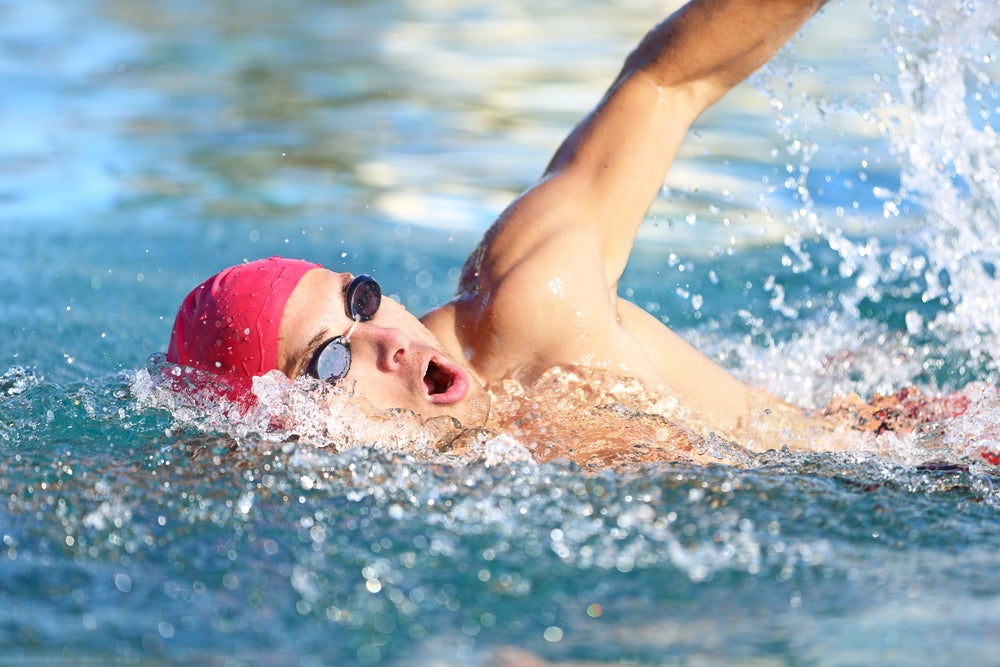Ask Coach Sara: Remaining Calm In The Open Water

Photo: <a href=http://shutterstock.com>Shutterstock.com</a>
Your Twitter questions about swimming as a triathlete, answered by coach Sara McLarty.
Q: At what point does a full-length, smooth pull become over-gliding? —@ajmorgan22
A: Great question! The secret lies in changing the focus from your arms to your torso. Because the power of the pull originates from your strong core muscles, your stroke should start when your torso begins rotating toward the opposite side. “Over-gliding” occurs when your lead arm is still extended while your torso’s rotation is passing through a neutral or horizontal body position.
Q: I am doing a 2-mile open-water swim followed by a 5K run. Training tips? —@smkynbandt
A: The best way to practice for an aquathlon is to run directly after swim practice one or two times per week. Your goal is to become comfortable running after a hard and long swim. Skip the cool-down in the pool, get out after the hard set, slip into your shoes, and run five to 10 minutes at race pace. Figure out your nutrition plan before race day by testing multiple options on race-specific training days.
RELATED: Power Boost Your Brick Runs With Plyos
Q: How do you know if you’re ready for your first ocean triathlon swim? —@athletesheart
A: An ocean swim can offer a challenging start to any triathlon. Factor in the swim venue when picking a race and match that with your swim confidence level and experience. For example, the Pacific may have the added challenge of cold temperatures, while the Florida coast is prone to big waves and riptides. Prepare yourself by knowing the typical conditions. Most importantly, practice as much as you can in similar conditions! Swim the race distance in the pool without touching any of the walls, or if possible without lane lines to guide you. Train in the open water as much as possible so you are comfortable on race day.
RELATED: Is Open-Water Swim Training Necessary?
Q: How do you remain calm and confident when swimming or racing in adverse open-water conditions? —@trikitten
A: All swimmers should have a “safety stroke” that they are comfortable performing in the water when issues arise. Breaststroke, sidestroke and elementary backstroke are some examples. Find a way to keep moving forward while catching your breath, adjusting your goggles or looking for the course buoys. Don’t wait until race day to decide how you are going to lower your heart rate for a long open-water swim. Practice your safety stroke on a regular basis at every training session so it is second nature when you’re in unfavorable conditions.
Got a swimming question? Coach Sara wants to help. Just tweet your queries to @SaraLMcLarty
Pro triathlete and swim coach Sara McLarty has 25-plus years of experience and knowledge about swimming mechanics, efficiency and technique.